Soy milk is one of the most popular dairy milk alternatives today, mainly because so many people have lactose intolerance, a condition making them unable to properly digest lactose in cow’s milk, which can lead to issues such as bloating, gas and diarrhea. When lactose is digested, it’s broken down into glucose and galactose, which are then absorbed through your intestinal lining.
However, lactose-intolerant people lack an enzyme called lactase to process cow’s milk properly. Instead, the lactose in the milk goes directly to their colon, where the bacteria living there begin to digest it, leading to digestive problems.
Since lactose-intolerant people can’t ingest animal milk, they turn to alternatives, one of which is soy milk. While soy milk has been touted to be healthy, an abundance of scientific research says otherwise.
What Is Soy Milk?
Soy milk is a beverage made by blending soybeans and water, then straining the resulting mixture. It is quickly becoming a popular product these days; according to a report from Mintel, a marketing intelligence agency, soy milk has a 13% share of the market of milk alternatives, with almond milk having the biggest share at 64%.
Is Soy Milk Good for You?
The biggest question surrounding soy milk is whether or not it is good for you, and the answer is a resounding “no.” In conventional farming practices, 94% of total acres are used for growing GMO soybeans, which are also herbicide-tolerant, meaning that the beans can be sprayed with glyphosate, glufosinate and dicamba.
Glyphosate is one of the most toxic chemicals used in agriculture today and is gradually destroying the environment. It’s been found as a residual contaminant in numerous food products, including virtually all children’s cereals. Furthermore, studies have linked it to several health issues, such as:
- Disrupted endocrine signaling systems
- Increased risk of breast cancer through estrogen receptors
- Increased risk of non-Hodgkin lymphoma
- Chronic kidney disease
- DNA damage
Other elements to watch out for in soy milk are the additives mixed into it, such as carrageenan, a substance used to thicken foods. A 2001 study published in the Environmental Health Perspectives journal found that carrageenan causes gastrointestinal ulcers and abnormal tissue growth (neoplasms) in animal models. Make sure to avoid carrageenan by taking the time to read product labels carefully, including any milk substitutes you may consider purchasing.
Other Dangers of Soy Milk You Should Know
Soy is high in lectins, which are carbohydrate-binding proteins that are classified as antinutrients and serve as deterrents to animals. Another example of a plant-derived product that has lectins are castor beans, which contain so many of these antinutrients that they’re toxic to most organisms.
The specific lectin found in soy is called soybean agglutinin (SBA). It’s considered the main antinutrient found in soy products. According to a 2018 study in the International Journal of Molecular Science, SBA can decimate gut health by affecting “intestinal structure, barrier function, mucosal immune system and balance of intestinal flora.”
If you’re going to eat soy products, the safest way to consume them and avoid lectin is by fermenting them. A study published in Food Research International notes that fermenting beans can reduce lectin content by up to 95%.
Soy Milk vs. Almond Milk: Which Is Better?
Almonds are one of the most popular nuts consumed globally, and they can be prepared in various ways. One of its most popular forms is almond milk, which is made by soaking almonds, blending them in water and then straining them using a filter. If you’re deciding between almond milk and soy milk, almond milk may be slightly better. These nuts contain nutrients like:
- Protein
- Fiber
- Potassium
- Calcium
- Phosphorus
However, almond milk isn’t the magic answer you’re looking for when it comes to dairy alternatives. Many commercial almond milk products sold in the market actually contain very little almonds — as little as 2%. To make up for this lack of almonds, these products make use of thickening agents like carrageenan, which have been linked to health issues like gastrointestinal problems. For more info about this topic, read my article “How Many Almonds Are in a Glass of Almond Milk?”
Whole almonds are still better than almond milk because they simply offer more nutrients in fewer servings. You would have to drink an entire carton of commercial almond milk to receive the same vitamins and minerals from a single serving of almonds.
Almond milk can be a healthy option if you make your own at home. This strategy allows you to use more almonds (and therefore, acquire more nutrients) while creating a fresh, tasty beverage. Follow this easy procedure to make your own almond milk:
Homemade Almond Milk Recipe
| Ingredients: | ||
| 1 cup raw organic almonds | 2 cups filtered water, plus more for soaking | Raw honey to taste, (optional) |
Procedure:
- Place the almonds in a bowl large enough for them to be spread out, then cover them in water, making sure they’re completely submerged.
- Soak the almonds overnight for up to two days. They will become plump as they absorb water. When soaking, you can cover the container with a cloth or place it in the refrigerator. Rule of thumb: longer soaking time creates creamier milk.
- Drain the water from the bowl and then rinse the almonds thoroughly under cool running water. You’ll know they’re soaked correctly when they feel squishy when pinched.
- Place the almonds in a blender and pour in two cups of water.
- Begin grinding the almonds by pulsing the blender. Afterward, blend continuously until the water becomes opaque and the almonds have the same consistency as a fine meal.
- Using a cheesecloth, strain the almond meal and extract the liquid. To do this correctly, squeeze the cheesecloth.
- Add organic honey to taste, if desired.
Note: Homemade almond milk lasts up to two days.
(Recipe adapted from The Kitchn)
Coconut Milk: A Healthier Substitute for Soy Milk
When it comes to milk alternatives, coconut milk should be at the top of your list. Made from the expressed juice of grated coconut meat and water, the main benefit of drinking this beverage is its healthy fat content.
Coconut milk contains lauric acid, which is converted into monolaurin when digested. Monolaurin is a triglyceride that offers various benefits to your health, such as fighting various germs. In one study published in the Journal of Medicinal Food, monolaurin was found to have antibacterial effects, even against strains resistant to antibiotics.22 In another study, monolaurin exhibited antifungal capabilities against Candida albicans, a yeast responsible for various fungal infections.
Lauric acid is also classified as a medium-chain fatty acid (MCFA) or medium-chain triglyceride (MCT). Research has found that this type of fat may help promote health by:
- Controlling hunger —Consuming MCTs may help release hormones that promote satiety, thereby helping you reduce your overall caloric intake.
- Boosting energy — MCTs are digested quicker compared to other triglycerides. This means that they can be used as an instant source of healthy energy compared to sugar and carbs.
- Improving cognitive function — Studies indicate that MCT consumption may help manage the symptoms of cognitive conditions such as autism and Alzheimer’s disease.
Just like almond milk, coconut milk can be made in the comfort of your own home. Having your own stock of fresh coconut milk will give you access to healthy fats all year round, as long as you have a supply of fresh, organic coconut meat. Follow the procedure below to make your own:
Homemade Coconut Milk Recipe
| Ingredients: | |
| 8 ounces of unsweetened shredded coconut meat | 4 cups of filtered water |
| Equipment needed: | ||
| Measuring cup | Blender | Nut milk bag |
| Medium-sized bowl | Mason jars for storage | |
Procedure:
- Bring the water to a boil, then pour it (along with the coconut meat) in the blender.
- Let the mixture rest for a few minutes to help the meat soften.
- Blend the mixture on high speed for one to two minutes until the meat is pulped and looks milky.
- Open the nut bag and place it in the bowl. Pour the coconut pulp over the bag.
- Squeeze out the milk by cinching the bag shut. To do this effectively, use both hands. If done correctly, the resultant milk should come out easily. Keep squeezing until all liquid comes out.
- Place the milk in the mason jars. You can use any other container, as long as it’s airtight.
Note: This coconut milk recipe can last up to four days upon straining. When frozen, it can last for three months.
(Recipe adapted from The Kitchn)
Soy Milk for Babies Should Be Avoided
There’s no question surrounding the topic of feeding soy milk to infants; it should be avoided, as it can interfere with essential functions of body tissues and nutrient absorption. A report from the Children’s Hospital of Philadelphia notes that infants who consumed soy-based formulas had subtle changes in their reproductive system cells and tissues compared to those who used cow’s milk or breastmilk.
In another study, daily exposure of infants to soy formula was found to cause a concentration of isoflavones that are 13,000 to 22,000 times higher than normal. In conclusion, researchers who published a study in Paediatrics & Child Health still recommend breastfeeding as the first choice for infant feeding. There is simply no comparison to what a mother’s breastmilk provides.
Fermented Soy Is the Only Type of Soy You Should Eat
Soy can be part of a healthy diet, but make sure that what you’re eating is organic and fermented. Regular soy products, including soy milk, are out of the question. A few foods you can try instead include miso, natto, tempeh and traditionally made soy sauce, which are staples in Japanese cuisine.
Frequently Asked Questions (FAQs) About Soy Milk
Q: Is soy milk vegan?
A: According to The Vegetarian Resource Group, soy milk adheres to veganism since it is a pure, plant-derived product.
Q: Is soy milk dairy?
A: Soy milk is a nondairy product since it is not made using cow’s milk.
Q: Is soy milk healthy?
A: No, as soy products are often made from GMO soybeans that are contaminated with glyphosate.
Q: How is soy milk made?
A: Soy milk is made by blending together soybeans and water until smooth. The mixture is strained until milk is produced.
Q: Does soy milk have lactose?
A: No, since soy is not a dairy product.
Q: Is soy milk gluten-free?
A: Yes, soy milk is gluten-free since gluten only appears in grains, namely wheat, barley and rye.
Q: Where does soy milk come from?
A: Soy milk comes from soybeans and water that have been grinded or blended together.

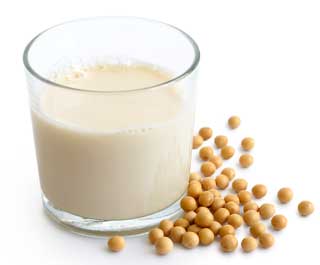
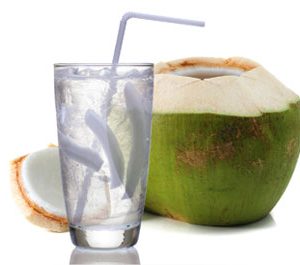
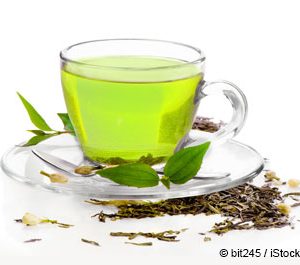
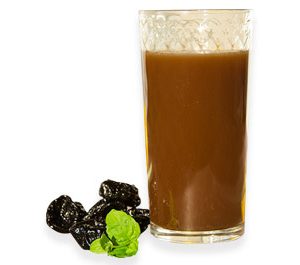
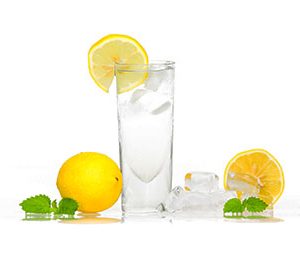
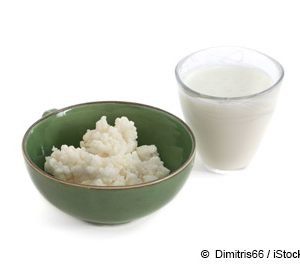
Reviews
There are no reviews yet.